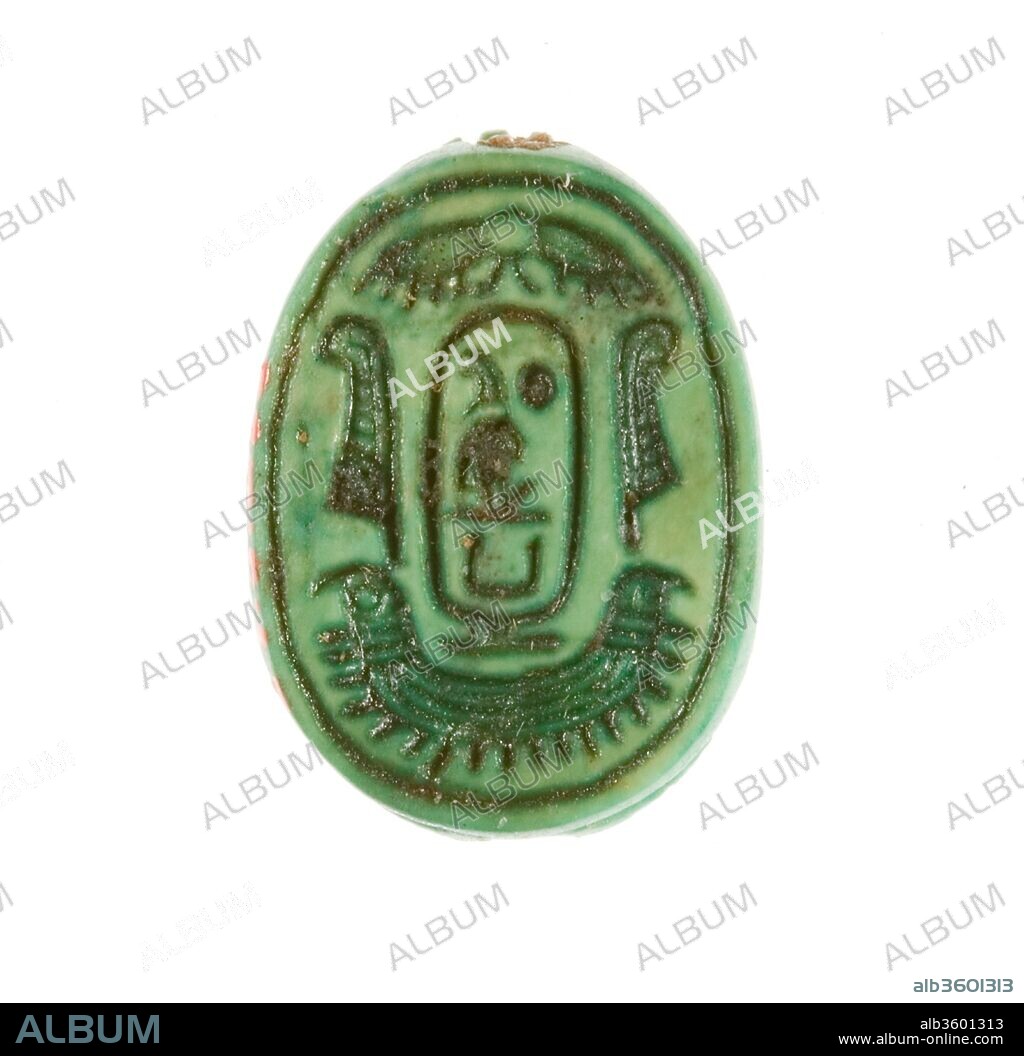alb3601313
Scarab Inscribed for Maatkare (Hatshepsut)

|
Add to another lightbox |
|
Add to another lightbox |



Buy this image.
Select the use:

Title:
Scarab Inscribed for Maatkare (Hatshepsut)
Caption:
Scarab Inscribed for Maatkare (Hatshepsut). Dimensions: L. 1.8 cm (11/16 in.); w. 1.3 cm (1/2 in.). Dynasty: Dynasty 18, early. Reign: Joint reign of Hatshepsut and Thutmose III. Date: ca. 1479-1458 B.C..
During the 1926-1927 excavation season, the Museum's Egyptian Expedition uncovered three foundation deposits along the eastern enclosure wall of Hatshepsut's funerary temple at Deir el-Bahri in Western Thebes. Among the contents were 299 scarabs and stamp-seals. Sixty-five of these are now in the Egyptian Museum, Cairo, and the rest were acquired by the Museum in the division of finds.
Among the inscriptions on the bases of these scarabs and seals are examples of every title Hatshepsut held, from the time she was "king's daughter" during the reign of her father, Thutmose I; through the time she was queen of her half-brother, Thutmose II; and during her regency and co-reign with her nephew/step-son, Thutmose III.
The inscription on the base of this scarab records Hatshepsut's throne name, Maatkare, enclosed in a cartouche and flanked by feathers that symbolize the goddess Maat (truth). Above the cartouche is a winged sun disk and below is a broad collar with falcon terminals. The name Maatkare may be roughly translated as Maat is the life force of Re (the sun god).
Technique/material:
Steatite (glazed)
Period:
NEW KINGDOM
Museum:
Metropolitan Museum of Art, New York, USA
Credit:
Album
Releases:
Image size:
2654 x 2600 px | 19.7 MB
Print size:
22.5 x 22.0 cm | 8.8 x 8.7 in (300 dpi)
Keywords:
AFRICA • BROAD COLLARS • COLLARS • COSTUME • EGYPT • EGYPTIAN ART • FEATHERS • FROM EGYPT, UPPER EGYPT, THEBES, DEIR EL-BAHRI, TEMPLE OF HATSHEPSUT, FOUNDATION DEPOSIT 7 (G), MMA EXCAVATIONS, 1926-27 • GLAZING • JEWELRY • METROPOLITAN MUSEUM OF ART, NEW YORK, USA • NECKLACES • NEW KINGDOM • SCARABS • SCULPTURE • STEATITE (GLAZED) • STEATITE • TALC • THÈBES • UPPER EGYPT


 Pinterest
Pinterest Twitter
Twitter Facebook
Facebook Copy link
Copy link Email
Email
